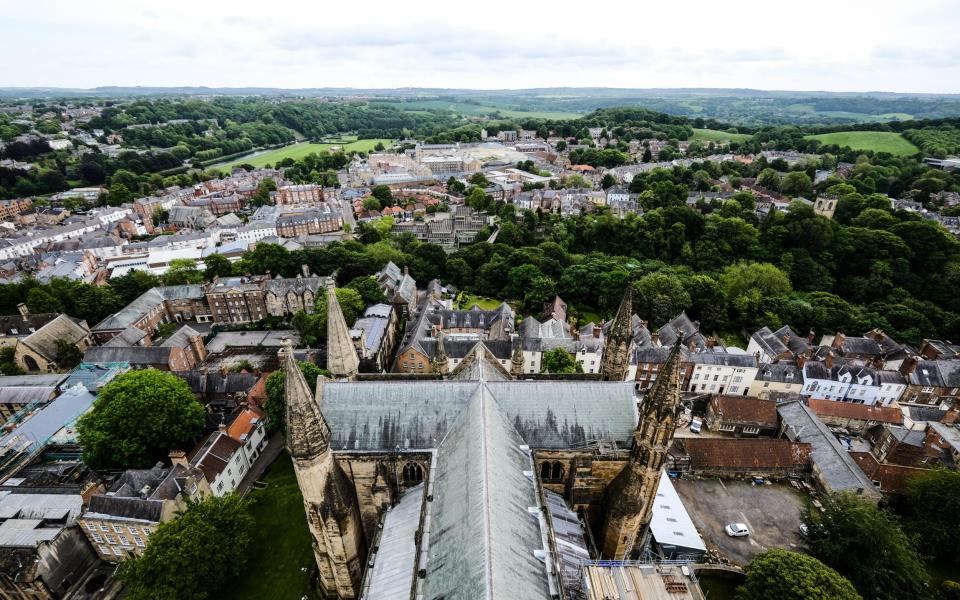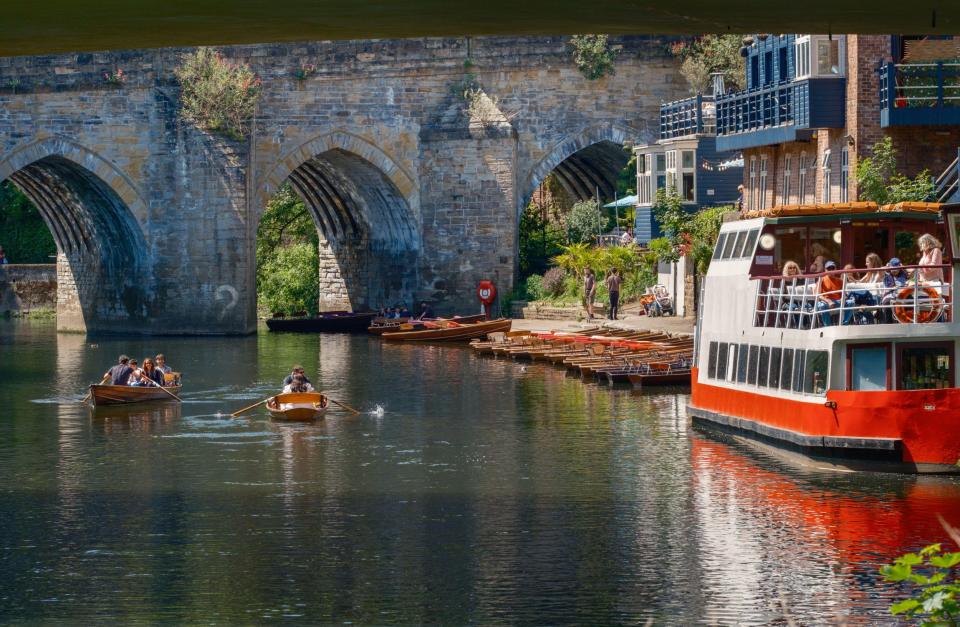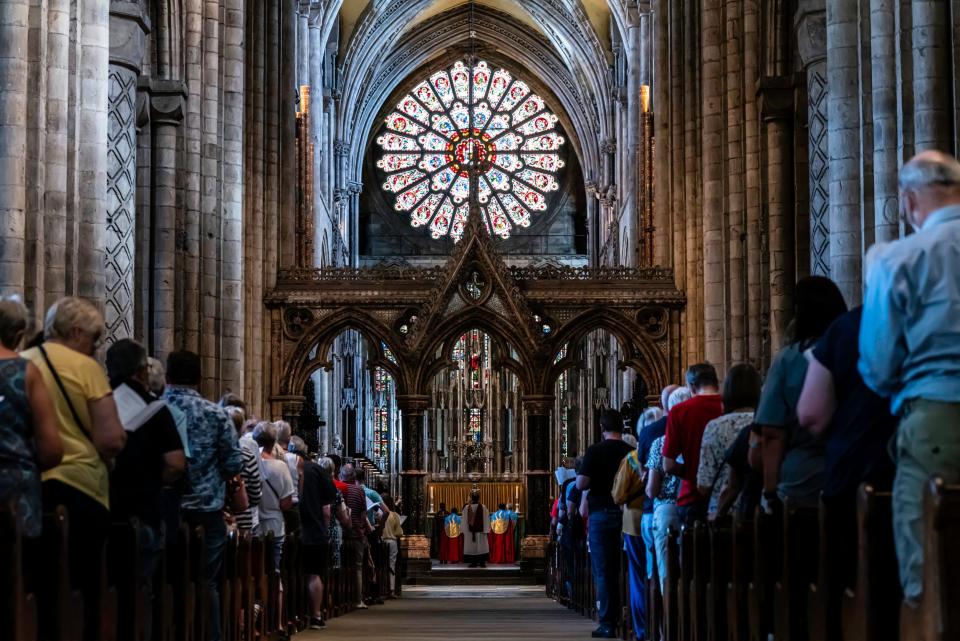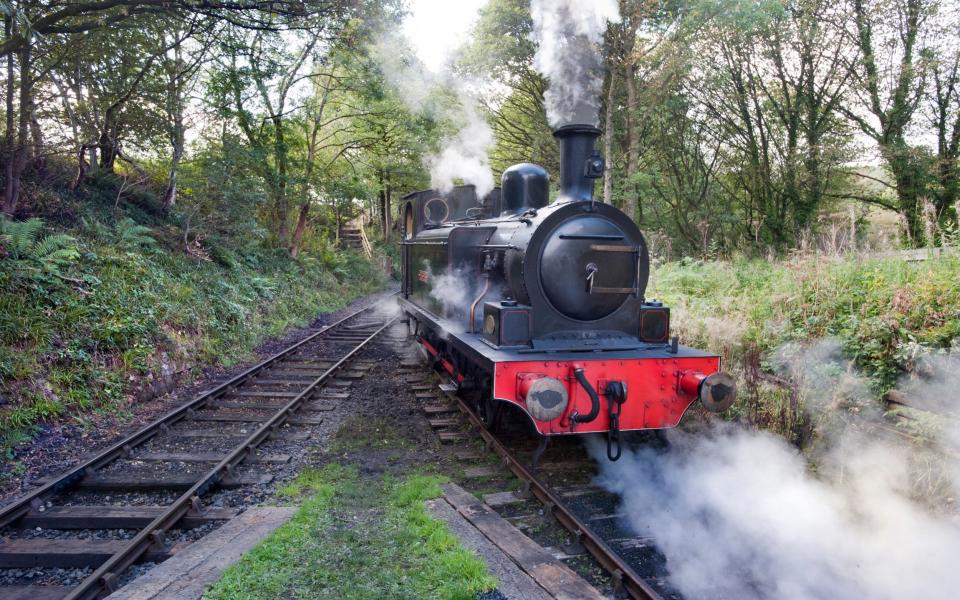Why Durham is England’s most underrated county

It should come as no surprise that Britain’s first private nuclear power station is to be built on Teesside in County Durham – the county has been at the cutting edge of innovation since Saxon times. Durham has given us the first pointed arch and stone-vaulted ceiling, the first major work of literature in England, the first English glass, the first family of the United States, the first railway bridge and public railway, the friction match, the electric light bulb and, of slightly less use, the first congestion charge, a rare blight upon otherwise glorious old Durham Town.
The city is known everywhere, the county less so, but it is a treasure trove. Less ostentatious than its neighbours, Durham has a proud history as England’s first and most enduring County Palatine, ruled since Norman times by a Prince Bishop with his own parliament, army, mint and law courts until as recently as 1836.
The Prince Bishop’s throne, built in the 14th century and said to be the highest in Christendom, still resides in Britain’s most spectacular church. Few will forget their first glimpse of Durham’s majestic cathedral standing resplendent upon a bluff above a loop of the River Wear, “half church of God, half castle ’gainst the Scot”, as Sir Walter Scott described it.

Founded in 995 to house the relics of St Cuthbert, a seventh-century Bishop of Lindisfarne, Durham Cathedral is regarded as perhaps the finest Norman building in the world. Its long, lofty nave of round arches and massive carved round pillars is breath-taking, while the nave roof is the earliest example of stone-vaulting in the world and the first structure anywhere to make use of the pointed arch.
Buried in the cathedral along with St Cuthbert is the Venerable Bede. Bede was born around AD 673 near Monkwearmouth, now part of Sunderland, and spent his early years at the monastery founded there in AD 674 by Northumbrian monk Benedict Biscop. All that remains of the monastery is the much rebuilt St Peter’s Church, although the lower portion of the church tower, which now forms a vaulted porch, is from Biscop’s original seventh-century building, the oldest surviving Saxon stonework in Britain. It is a spine-tingling experience to touch the very same stones that Bede touched more than 1,300 years ago.

No longer surviving in St Peter’s, alas, are the first glass windows seen in England, made by glass workers imported by Biscop from France. Fittingly, by the 18th century, thanks to an abundance of high-grade sand and coal, Sunderland had become Britain’s chief glass-making centre – the National Glass Centre, close by St Peter’s, tells the story.
The Venerable Bede eventually moved to a sister monastery built by Biscop 10 miles north by the river Tyne at what is now Jarrow. Here he wrote his celebrated Ecclesiastical History of the English People, the first major work written in England. The monastery’s church of St Paul was dedicated in 685 and still has its dedication stone – the oldest in Britain – set above the chancel arch, while a Saxon window in the south wall contains fragments of England’s earliest coloured glass.
Another son of Sunderland who went north, in his case to Gateshead, was Joseph Swan, who in the 1870s invented the electric light bulb, with which he lit his house, Underhill in Low Fell, Gateshead, the first domestic property in the world to be illuminated by electric light. The house is now a retirement home but retains some of Swan’s original electrical fittings and can occasionally be visited by appointment.

Washington Old Hall, the ancestral home of the first president of the US, dominates the village, now a suburb of Sunderland, that gave America’s capital its name. George Washington’s ancestor William de Hartburn (of Hartburn in the south of the county) bought the manor of Wessyngton in 1180 and changed his name to William de Wessyngton, later Washington. The Old Hall is today run by the National Trust and is popular with American visitors.
Down the coast from Sunderland, standing stark on a clifftop at Seaham, is the Saxon church of St Mary the Virgin, dating from the seventh century and one of the 10 oldest churches in England. Gracing its marriage register are the signatures of Lord Byron and his bride Anne Isabella Milbanke, wedded on Jan 2 1815 in the drawing room of next door Seaham Hall, owned by Anne’s father.
The marriage lasted a little over a year, but the couple produced a daughter, Ada, who grew up to become a brilliant mathematician and a friend of Charles Babbage, the inventor of the Analytical Engine, the first computer. Ada Lovelace suggested a variety of uses for the machine and is thereby recognised as the first computer programmer.

Set in a circle of trees in the village of Escomb, just outside Bishop Auckland, stands the oldest unaltered church in England. Built around AD 675 using stones from a nearby Roman fort, this simple, exquisite Saxon church can also boast England’s oldest sundial. For those wishing to visit, the church key hangs outside the appropriately named No 28 Saxon Green.
Railway buffs can find much of interest in County Durham. A few miles west of Sunderland, hidden in a wooded valley, is Causey Arch, the world’s first railway bridge, opened in 1726 to transport coal from the mines at Tanfield to the river Tyne. The bridge is the work of local stonemason Ralph Wood, who relied on what he knew of Roman technology since no one had built anything so ambitious since Roman times.
Wood’s first attempt fell down and he was so convinced this second effort would also collapse he allegedly flung himself off the bridge to his death. The bridge stayed up, for 30 years the longest single span in Britain, carrying 900 wagons a day, drawn by horses along two timber rails.

In the Locomotion Museum at Shildon you can see George Stephenson’s Locomotion No 1, the steam engine that drew the first passenger train on the world’s first public railway, the Stockton and Darlington Railway, on Sept 27 1825.
In Darlington you can find the Skerne Bridge, built in 1825 to carry the original railway across the river Skerne and still functioning. It is the oldest railway bridge in the world in continuous use, now part of Darlington’s Railway Heritage Quarter, which was created to celebrate the railway’s bicentenary in 2025.
In Stockton, you can find the world’s first railway ticket office, a rather forlorn brick building beside a road junction, where the first railway ticket was sold and marking the spot where the first rail of the Stockton and Darlington was laid.
The ticket office is a few short steps away from Stockton’s high street, the widest in Britain, where two years later, in 1827, John Walker invented the friction match at his chemist shop at No 59. The shop has gone but rather appropriately the site is now occupied by a Boots pharmacy and there is a plaque to Walker outside.
For a county with such an impressive industrial heritage, Durham is not without its rural delights: 40 miles of heritage coastline, wild moorlands, much of the North Pennines Area of Outstanding Natural Beauty and England’s highest waterfall, High Force, among them.
Time to leave – but Roger Whittaker was right, “the leaving’s gonna get me down”.
Where to stay in County Durham
Seaham Hall, Seaham
Stay in the house where Lord Byron was married. It’s a luxurious clifftop Georgian country house with stunning sea views, a spa, two restaurants and comfortable rooms. Doubles from £284.
Forty Winks Guesthouse, Durham
A Victorian guesthouse situated on the banks of the river Wear, with spectacular views of Durham Cathedral and nine individually styled bedrooms. Doubles from £160.


